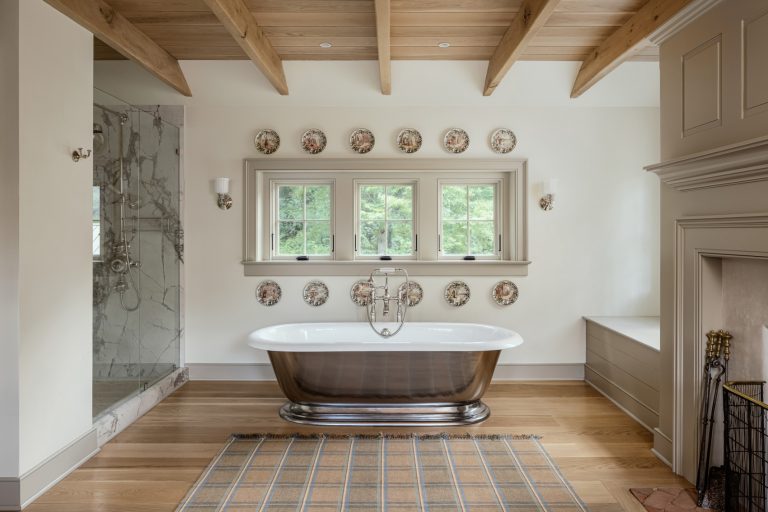A simple bathroom has been transformed into a tranquil haven within a traditional Pennsylvania Dutch farmhouse. It blends historic charm with modern luxury and is an inspiring example for bathroom designers.
Owned by a prominent American set designer with decades of scenic design experience, the interior reflects the artistry found in theatre production. The owner’s career highlights include work at the Metropolitan Opera and a Tony Award nomination for the musical “Grey Gardens” in 2007. The farmhouse, dating back to 1814, is a stunning representation of Pennsylvania German architecture, originally featuring three rooms per floor – a layout evocative of Andrew Wyeth’s paintings, with Wyeth himself having lived just 50 minutes away.
Over 17 years, the home has been carefully renovated to blend historic integrity with modern comforts. A two-storey extension added a spacious reception area and a luxurious first-floor bathroom, marking the home’s evolution from a weekend retreat to a permanent residence. With a focus on maintaining the home’s architectural heritage, a working fireplace visible from the bathtub creates a cosy and inviting atmosphere, a feature bathroom designers may wish to explore in their own projects.

In collaboration with Joe Hammes of Red Oak Restorations, careful attention was paid to the proportions and layout of the extension. Material choices were equally thoughtful, with White Oak used for both ceiling and flooring, harmonising with the original structure. An antique Pennsylvania Day Bed was sourced, echoing William Morris’s Arts and Crafts movement, and placed before the fireplace to enhance the room’s rustic character. Plates depicting Richard Wagner opera scenes were also incorporated, adding personal flair – a nod to the owner’s passion for theatre. These were originally purchased from the Bayreuth Festival’s gift shop in the late 19th century.
Large Italian tiles were chosen for the shower, offering a grout-free, low-maintenance alternative to marble while maintaining the aesthetic balance between tradition and modern functionality. The trim was painted using Fine Paints of Europe’s Watermark to further enhance the room’s period-appropriate appearance. At the same time, Farrow and Ball’s James’ White Estate Emulsion was selected for the walls.


The bath, vanity, and brassware were sourced from Drummonds, reflecting the owner’s fondness for historic English plumbing. A polished cast iron bath, reminiscent of antique pewter, and solid Drummonds taps and shower mixers were chosen for their durability and timeless design – a perfect choice for designers seeking a combination of elegance and authenticity.
This remarkable renovation, a collaboration between the owner and skilled craftspeople, showcases how period homes can be sympathetically updated to provide luxurious, modern living spaces. It serves as a source of inspiration for designers aiming to create bathrooms that are both functional and steeped in historical character.


